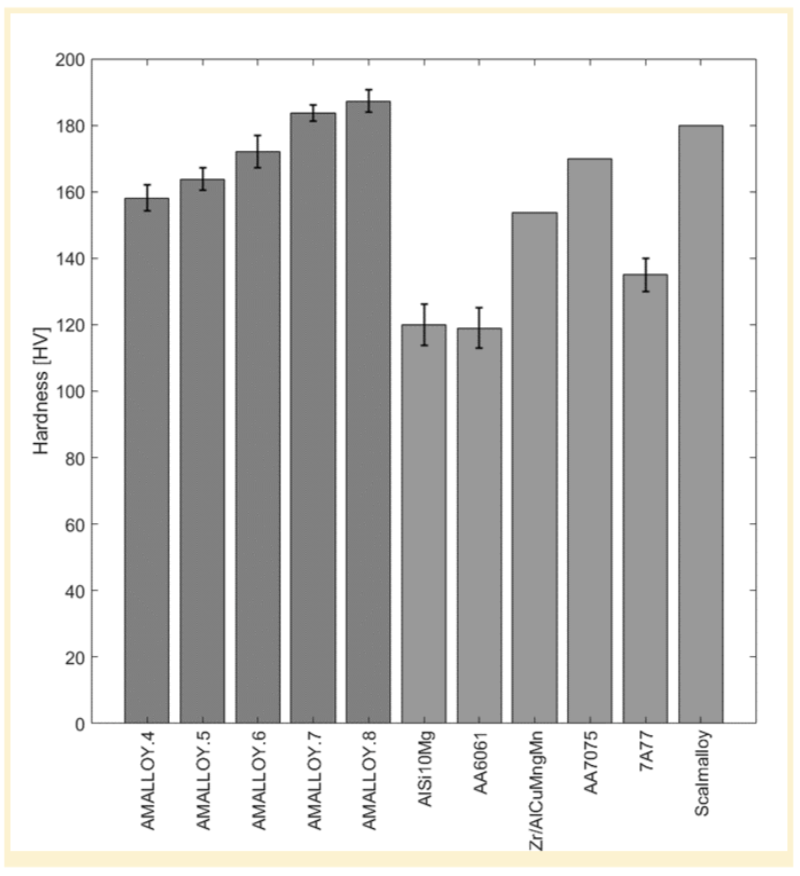AMALLOY, a proprietary new aluminum alloy powder, developed by the Technology Innovation Institute (TII), specifically for additive manufacturing was recently unveiled at the AM Conclave conference in Abu Dhabi.
AMALLOY is the first metal additive manufacturing feedstock designed in the Middle East for use on laser beam powder bed fusion (PBF-LB) systems. The low-cost, high-strength aluminum alloy demonstrates excellent printability and performance.
When compared to commercially available AlSi10Mg alloys, AMALLOY registers 33% greater strength without compromising on ductility. This makes the new material an excellent candidate for parts where light-weight and high strength are must-haves to address demanding applications.
Due to the nature of its chemical formulation and intrinsic metallurgical compounds, AMALLOY features an incredibly low hot crack susceptibility coefficient, meaning higher strengths can be achieved without hot cracking issues.
Higher strengths are made possible by a robust co-eutectic microstructure combined with a high level of saturation, precipitation hardening, and grain refining. In collaboration with Oxford University, Atom Probe Tomography (APT) analyses revealed the presence of nano-precipitates in the primary aluminum microstructure that further enhanced the alloy’s strength.
In addition to the excellent mechanical properties, the alloy has been tested up to temperatures of 300ºC – revealing excellent thermal stability and making this grade potentially usable in high-temperature environments.
“Our focus is on developing high strength alloys with excellent printability. We intend to use these new materials in manufacturing defect-free parts to be employed in critical and high-value applications,” says Dr. Nesma Aboulkhair, Director of Additive Manufacturing at TII.
“We are adopting a framework for an integrated computational and experimental approach to design and produce these new materials for use in metal AM. This framework constitutes six phases including alloy design, experimental validation, AM for in situ-alloying with accelerated process optimization, material testing, metal powder optimization, and finally, documentation.”
The framework is conducted entirely in-house from start to finish and has already proven so successful in developing AMALLOY that TII has filed for a patent for the alloy with the US Patent Office.
TII intends to use the framework to develop new alloys from other families of metals and also expects to use the versatile framework to develop new alloys for traditional manufacturing processes.

“The target clientiele for the new material we are developing for metal 3D printing are worldwide metal powder producers and we are exploring licensing our new patented alloy compositions to global manufacturers,” says Dr Federico Bosio, Lead Researcher for Additive Manufacturing Materials at TII.
“Some of the use cases that the specific AMALLOY is suitable for include low buy-to-fly parts for aerospace/aviation (i.e., antennas, aircraft brackets, nanosatellites) and high strength components such as topology optimized engine brackets.”
The following list shows the available material properties for the AMALLOY, in its as-printed state:
- Relative density of 99.9 % or greater
- Hot crack susceptibility (HCS) coefficient less than 0.3 (Clyne and Davis model)
- Vickers hardness between 140 HV and 200 HV based on chemical formulation
- Yield strength between 200 and 350 based on chemical formulation
- Ultimate tensile strength between 350 MPa and 500 MPa based on chemical formulation
AMALLOY will be further enhanced using TII’s development framework, with the aim of producing a high strength aluminum alloy specifically for high temperature applications. Once complete, the material will open up a raft of new applications across sectors such as aerospace, space, oil and gas, and nuclear.


